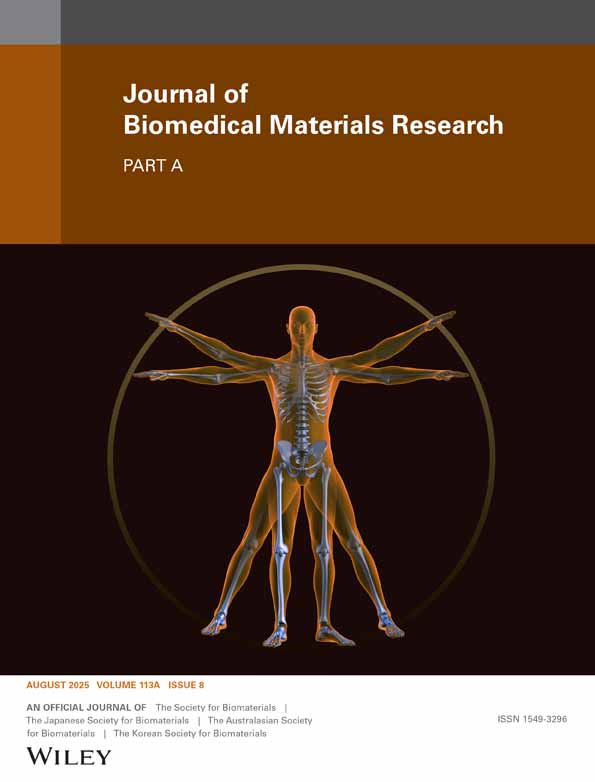A novel osteotropic biomaterial OG-PLG: In vitro efficacy
Abstract
Previously, a novel osteotropic biomaterial, OG-PLG [simvastatin grafted to poly(lactide-co-glycolide), PLG], was synthesized and shown to have degradation-controlled release kinetics. The objective here was to determine the effect of grafting statins to PLG on bone regeneration in vitro. Rat bone marrow cells were stimulated in vitro with simvastatin dissolved in media, saponified simvastatin dissolved in media, simvastatin released through diffusion from emulsion freeze-dried scaffolds, and OG-PLG. Unstimulated cultures and cultures stimulated with dexamethasone were used as negative and positive controls, respectively. In vitro bone formation was assessed using the alkaline phosphatase (ALP) and von Kossa assays at different times up to 16 days. ALP analysis revealed that saponified simvastatin at 10−7M and OG-PLG significantly increased ALP expression at various time points. von Kossa assay showed that simvastatin, saponified simvastatin, and OG-PLG significantly enhanced mineralization, with the effect from OG-PLG being the most significant. In short, OG-PLG significantly enhanced in vitro bone cell mineralization beyond the effect of simvastatin or saponified simvastatin dissolved in media and simvastatin released via diffusion from scaffolds. © 2005 Wiley Periodicals, Inc. J Biomed Mater Res, 2005




